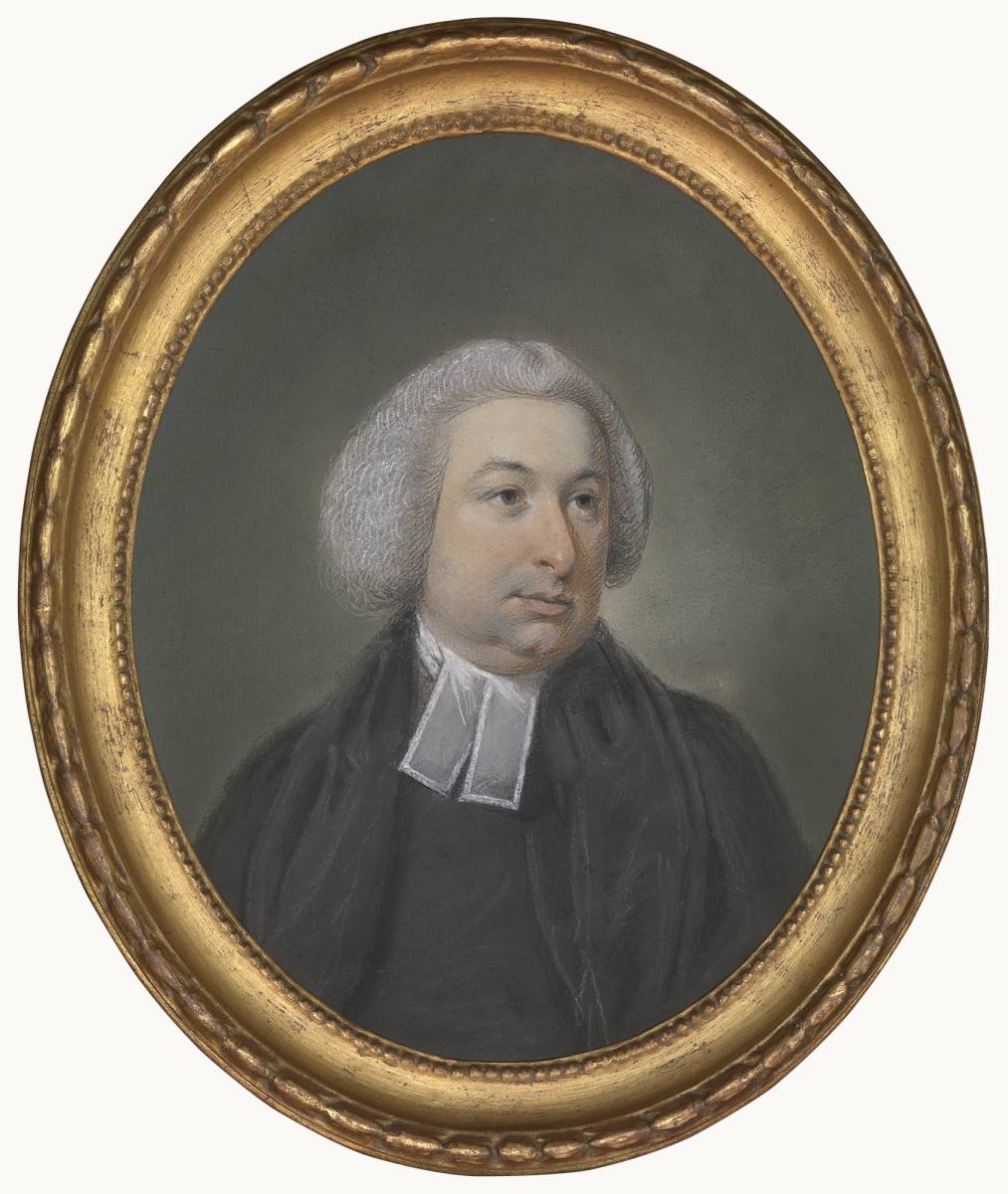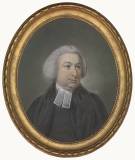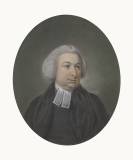This characteristic pastel portrait by Hugh Douglas Hamilton was made early in his career; it depicts precisely the kind of education, well-connected Irish sitter who fuelled his success.
The Reverend Henry Dabzac was from a distinguished Huguenot family, a celebrated academic historian, Dabzac received the Donegall lectureship in 1764 and from 1785 was Librarian and Senior Fellow of Trinity College, Dublin. According to his earliest biographer, Hamilton was the son of a peruke-maker based in Crow Street, Dublin. As Anne Hodge has pointed out, this places Hamilton’s father at the heart of the city: Crow street was a narrow thoroughfare formed part of the busy warren of streets bordered by the old Houses of Parliament and Trinity College at one end, and by Dublin Castle at the other. It is perhaps telling that in this early portrait, Hamilton shows Dabzac in a splendid powdered wig and his clerical bands. In 1754 Hamilton was apprenticed to James Mannin, a ‘pattern drawer’ who two years later was appointed master of the school of ornament at the Dublin Society’s drawing school, run by Robert West. Here Hamilton took the first prize in the 1755 competition, winning a premium of £1/16/. Hamilton developed a popular and profitable method of making pastel likenesses of sitters in a distinctive oval format. Hamilton developed a technique of using a sharpened pastel to hatch shaded areas of the features and, in the case of this portrait of Dabzac, the white powdered wig, which is drawn with particular care. In 1764 Hamilton moved to London where this small, oval pastels proved remarkably popular. In 1772 a critic noted: ‘Mr Hamilton in Pall Mall’s manner of taking likenesses in crayons… to the amusement of ladies… [as] far preferable to their soiling their fair hands with painting in colours in oil.’ This previously unknown portrait of Henry Dabzac is preserved in pristine condition and housed in its original, carved giltwood frame. An extensive, contemporary inscription on the verso records that it was a gift to Dabzac’s sister, Jane Crofton, noting his: ‘extensive learning, zeal, gently tempered by a spirit of charity.’ The Gentleman’s Magazine recorded his death in 1790: ‘At his country-seat near Rathmines, Ireland, the Rev. Henry Dabzac, D.D. one of the senior fellows and principal librarian of Trinity College, and professor of modern history in the University of Dublin.’





